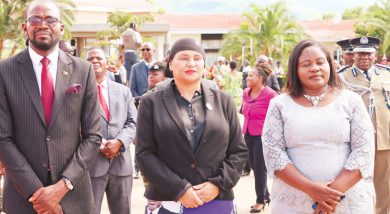Planning energy investments: Lessons from Malawi
Whole-system energy investment planning shows how countries like Malawi can reach Sustainable Energy for All goals at a lower cost, using abundant renewable resources, writes Rocky Mountain Institute regional program coordinator EDWARD BORGSTEIN.
Development needs energy. In countries like Malawi, where the national census shows only 12 percent of the population is connected to the electric grid and reliable power is one of the greatest barriers to business, this is shown in sharp relief.

Improving the country’s infrastructure to provide affordable, reliable energy for all is at the core of national development goals.
However, there is a misconception that renewables are an expensive alternative—and that least-developed countries will need cheap fossil fuels to kick-start their own growth in the same way as they were used by wealthy countries.
Today, solar is the cheapest source of electricity available in many places and battery costs continue to plummet. This means renewables offer the most compelling pathway for national energy investments.
The year 2019 also saw the greatest decline in coal-fired electricity generation in history. This transition was led by the US and a major drop in India, where the low utilisation of coal-fired plants is making them ever more costly to operate.
Against this backdrop, there is an opportunity for least-developed countries to fast-track their energy transitions in line with Sustainable Development Goals, especially goal seven on ensuring affordable, clean and sustainable energy for all by 2030.
RMI’s recent work with the Department of Energy Affairs in Lilongwe and the United Nations Office of the High Representative for the Least Developed Countries, Landlocked Developing Countries and Small Island Developing States (UN-OHRLLS) has shown how a least-cost energy development pathway for the country saves $500 million compared to business as usua.
The recommended model uses a fully renewable scenario and de-risking the sector to attract investment.
In November 2019, Malawi launched the Sustainable Energy Investment Study alongside the updated National Energy Policy.
The findings were based on extensive modelling, analysis, and stakeholder consultation across the energy sector, drawing on previous work in Malawi.
A few core principles emerged from this process. These can be distilled to the following five steps, that may be applicable to many other countries in similar situations.
1. First things first
Building the right projects in the right order is key.
Lead with a national vision for the energy sector, based on least-cost optimisation; try to avoid creating confusion and sending mixed signals with conflicting plans and policies.
Supply and demand need to be balanced, so the plans must be flexible enough to respond to the real need for power, without locking utilities into long-term contracts for power they can’t sell.
Applying these principles will help to save 25 percent of the projected cost of Malawi’s electricity generation infrastructure through to 2030.
2. Power to the people
There is need to balance distributed and centralised energy resources.
Energy efficiency will have a greater impact than we may think. In many cases, it can easily save 10–15 percent of projected demand, especially if it is considered at an early stage.
Also, on-grid and off-grid resources will work together in ways we might not expect.
Energy planning and regulations should allow space for different models to develop.
People will want to move up the “energy ladder”, improving the services available to them over time.
3. Drive cost declines
Least developed countries must drive cost reductions in both hardware and finance.
Capital costs for renewable energy are dropping fast and competitive bidding in a dynamic environment informed by international benchmarks should help capture these savings.
In parallel, a de-risking process will help reduce the cost of finance.
4. Subsidise wisely
Apply subsidies carefully, where they are most needed.
Climate finance is increasingly available for developing countries—although support may be needed to access the funds.
These funds should be used to further de-risk and blend with private finance where appropriate, to scale up investment.
Governments always give some sort of subsidy to the power sector, even where tariffs are cost-reflective. For example, this may be in the form of guarantees for investors.
This support should be made explicit and recognised.
Public and grant funding will need to flow to the hard-to-reach populations and support areas like cooking solutions. Not everything can be left to the market.
5. Tackle cooking crisis
Plan for a cooking energy transition.
Health issues and deforestation make an energy transition in cooking urgent, especially in countries like Malawi where the majority cook using firewood and charcoal.
Improved cooking stoves are an immediate first step in Malawi, but the long-term plan must be more ambitious.
This transition may seem expensive, but in the long term it is far cheaper than the alternatives.
In Malawi, the cost of delaying transition include environmental remediation—the high price of actions to reverse or stop environmental damage, topsoil loss, siltation of hydroelectric reservoirs and more.
Cooking must be considered alongside the broader energy sector and more funding is urgently needed.
Sustainable Energy for All estimates only one percent of the required finance for 2030 goals is being made available today.
For these five things to happen, governments need to lead.
In Malawi, the Department of Energy Affairs is looking to drive a clear agenda that development partners, investors, developers, and other partners can sign up to.
If stakeholders can work together, there is an opportunity for huge savings in the transition to a sustainable energy future. n





